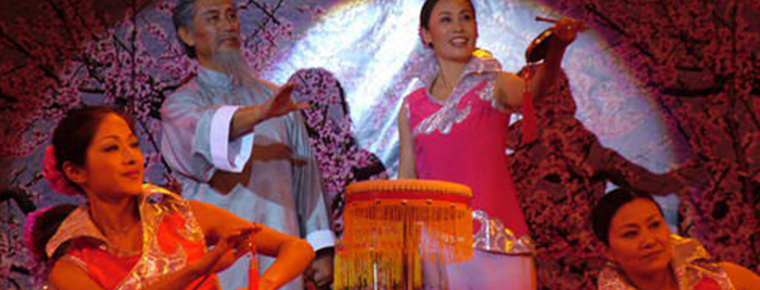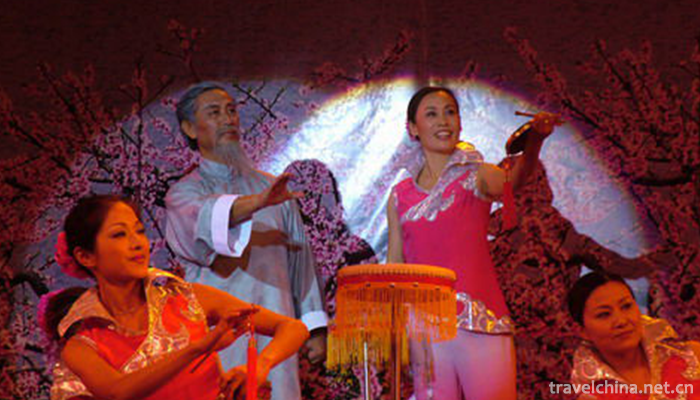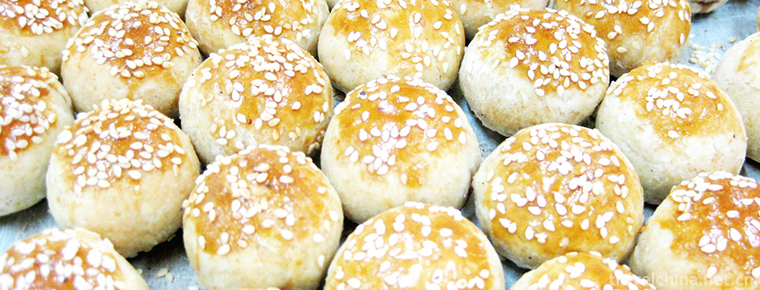2018-11-27

- By ChinaWiki.net
- Chinese Edition
- 2019-05-15
Gongs and drums
The Gong and drum books used to be called "Taibaoshu", "Taibao" is derived from the activities of "Taibu" in the countryside of Shanghai suburbs and counties, which seeks to protect the peace. It is one of the popular folk music arts in Shanghai. Because the performers sing stories by playing gongs and drums by themselves, the folk also called "Tanggongshu" and "Shengushu". After the founding of New China, it was named "gong and drum book". The Gong and drum books have a very broad mass base and can be regarded as an outstanding representative of Quyi. It is well known in the local area and has a wide influence. On May 20, 2006, the opera was approved by the State Council and listed in the first batch of national intangible cultural heritage list.
development history
The Gong and drum books used to be called "Taibaoshu" and "Taibao" was derived from the "Taibu" activities in the countryside of Shanghai suburbs and counties. The ceremony of "Taibu" is similar to the Taoist Taoist Taoist temple. Its purpose is to drive out the plague for the living. The ceremony is expressed in the form of rap, such as Tao Bai, singing, solo singing and duet singing. The contents are folklore and historical stories, which have nothing to do with religious ceremonies and are only used to entertain people and gods. Over time, this form gradually emerged from religious ceremonies and developed into a separate form of folk rap.
Gu Xiuchun, a representative of Nanhui in Jiaqing period of Qing Dynasty, spread Nanhui and Pudong under his guidance. His third generation of descendants also spread to Pinghu and Jiaxing of Puxi and Zhejiang Province. So there are three schools of art: Dongxiang, Xixiang and Jinping. Art transmission and oral teaching. At this time, Gong and drum books are called "singing cause and effect". They are sung with boring Gong and drum books and cymbals. Therefore, the names of "Taibaoshu", "cymbals" and "monographs" appear. There are more than 80 representative bibliographies, such as The Transition of Netboats and Jiugengtian. After liberation, there are more than 20 new books, such as The Salt Bureau and The Red Detachment of Women, which Comrade Chen Yun watched.
In the 1930s and 1940s, Taibao Books in Shanghai flourished. The tea garden "Lubange", which specializes in Taibaoshu, appeared in Nanhui City Chamber. Xiasha area has become a "Taibao Wood" of Taibao book artists because of artists'passing on from generation to generation. Xu Liankui, the nickname of black leather, has sung Tai Bao to Town God's Temple, Shanghai. During the Anti-Japanese War, Taibaoshu officially entered the urban area. At that time, the more influential actors were Hu Shanyan and Wang Junfa.
After 1949, only a few Shanghai calligraphers sang Taibaoshu concurrently. In 1957, the Shanghai Municipal Cultural Bureau excavated folk folk opera. Hu Shanyan, an artist, created the modern medium-length program "Dayan Bureau". The Nanhui County Cultural Museum drew on the old to bring forth the new, and compiled the first modern short program "Rice Fragrance in Luhua Dangling" under the name of "gong and drum book". From then on, Taibaoshu was renamed "gong and drum book", and gradually recovered to the amateur stage of folk art with an innovative face.
artistic characteristics
The basic performance form of Gong and drum books is that the performers shoot gongs and drums by themselves and tell stories by singing tables. In the early stage, it was single performances. In the late 1950s, it was gradually changed to stand-up rap and even performance singing by two or more people. Accompaniment instruments were gradually increased, with small silk-string orchestras such as Pipa and dulcimer. The main performances in common use were singing and supporting orchestras for single people. In the process of spreading, the music of Gong and drum scripts can be divided into "Dongxiang" in Chuansha and Nanhui areas and "Xixiang" in Songjiang and Jinshan areas, with tunes of "Jinping Diao" and "Diao".
Form of performance
(1) Divination ceremony, formerly known as "Taibu", still retains "hexagram pinching" (following Zhuge Liang's "Ma Qian Liu Ren Gua" and "Du Du"; (2) Folk belief ceremony, artists called "social book" and "Taibao". Function is like "social drama". There are four types of social books, namely, the "waiting for Buddha book" of rewarding God Baotai, the "receiving factory" of the large temple fair city gods when they go on tour, the "thanking Bodhisattva" for exorcising the patients and dispelling the epidemic, and the "presenting incense platform" for witch doctors who treat difficult and miscellaneous diseases. The gods sacrificed in these ceremonies are mainly Liu Mao-jung, the great God of locust driving, Yue Fei, the hero of resisting gold, Yang Zhongyun, the loyal minister and general of Liang, and so on. One section of the ceremonies is about singing "social books", persuading people to do good, love stories, folk legends and so on. (3) Folk opera. Artists who rapped and sang "She Shu" in the late Qing and early Ming Dynasties went to teahouse and bookstore to specialize in storytelling. Before the founding of the People's Republic of China, there were nearly 1,000 bookstores in Shanghai suburbs and adjacent areas, with over 300 artists.
Traditional tracks
The performances of Gong and drum books are mostly based on the traditional bibliography of long and medium-length works, while the amateur performances after 1949 are mainly based on the short and opening works of modern subjects. Traditional bibliographies are different from "small books" (that is, duet books) and "big books" (that is, dubbed martial arts books), but most of them are "small books" (such as "transitions of netboats", "Jiugengtian", "Eight Beautiful Tutorials of Takahashi", "Double Pearl Ball", "Jade Dragonfly", "Pearl Tower", "Biography of White Snake", "Wenwu Xiangqiu"; "big books" are "Biography of Heroes", "Luotong Saubei", "Wenwu Xiangqiu".《 Hujiajiang, Houxing Tang, Seven Swords and Thirteen Swordsmen, etc. Short-story programs such as "Wang Po scolds chickens", "Luhua Dangling in the Rice Fragrance", mid-story programs such as "Salt Bureau", "Lin Chong Running at Night", and the opening programs such as "Wild Flowers in December" and "Mantis Making a Kinship" all have certain representativeness. The contents of Gong and drum books are mostly based on folklore, romance novels and family ethics and historical stories, which have strong local flavor and local characteristics.
Inheritance significance
In 1950, Taibaoshu, cymbals, Xuanjuan and Shijinshu were collectively referred to as "Hushu", and in 52 years the suburbs were assigned to Jiangsu Province as "Farmer's Book" and Pudong as "Pudong Talk Book". In 1961, Gong and drum books entered the mass literary and artistic stage and were named "gong and drum books". For more than 40 years, Nanhui people created and performed more than 100 new works. In 1996, Nanhui was named "the home of folk art" by the Ministry of Culture. In 2004, Gong and drum books were listed as the second batch of pilot projects of the national folk culture protection project.
However, the development of Gong and drum books is not optimistic. Because of the changes of the times and the shrinkage of the professional market. From 1910 to 1932, gongs and drums were more popular in Shanghai than in Suzhou. In 1949, there were more than 300 bookstores in Shanghai, Zhejiang and Jiangsu, with only 30 remaining.
The old artists died one after another, and the song books were lost. Around 1949, more than 250 professional artists, rap and drum calligraphy artists sharply reduced to 5, only 2 can be a club. It has reached the state of no successors, and it is difficult to survive in an endangered state.
The state attaches great importance to the protection of intangible cultural heritage. On May 20, 2006, the opera was approved by the State Council and listed in the first batch of national intangible cultural heritage list.

Ask a Question
Your email address will not be published.



0 Questions